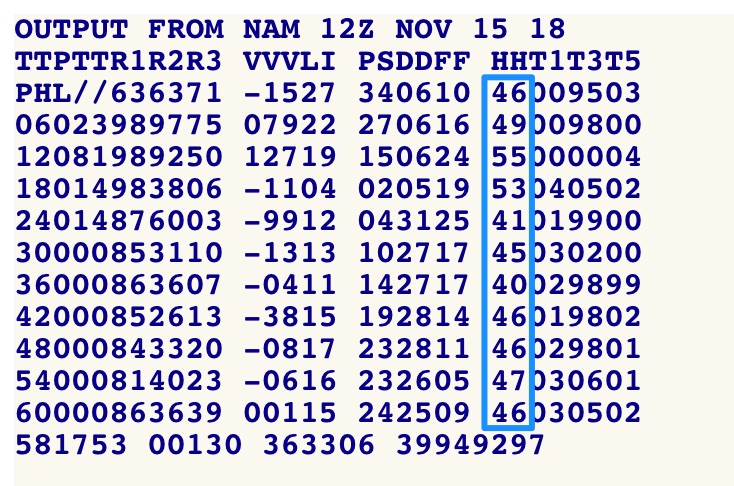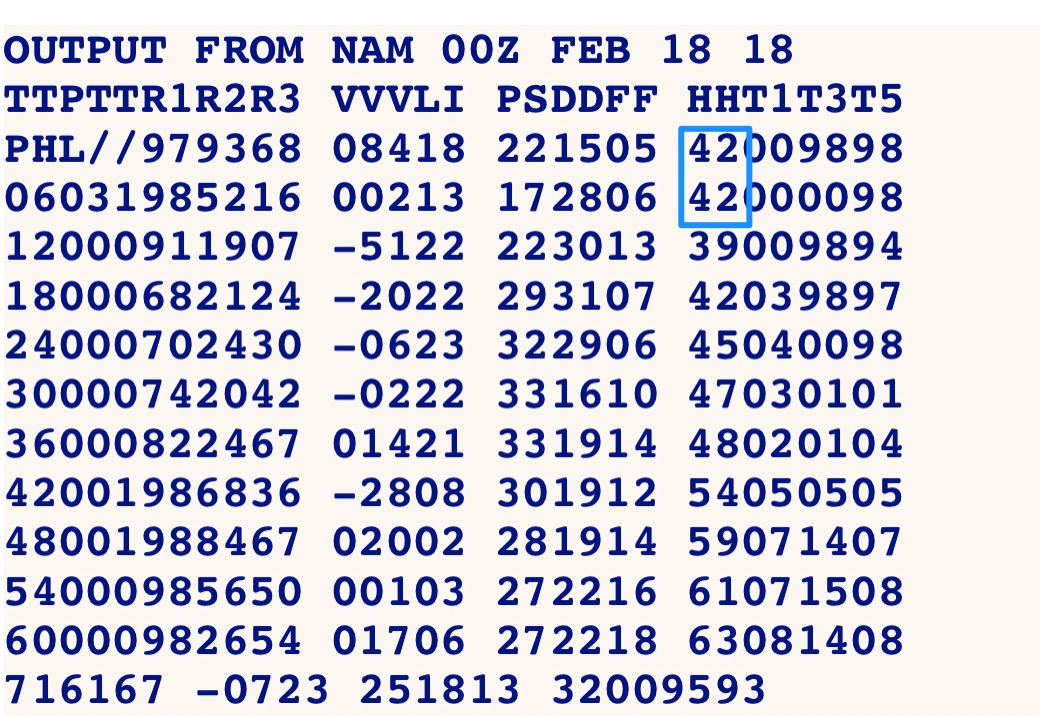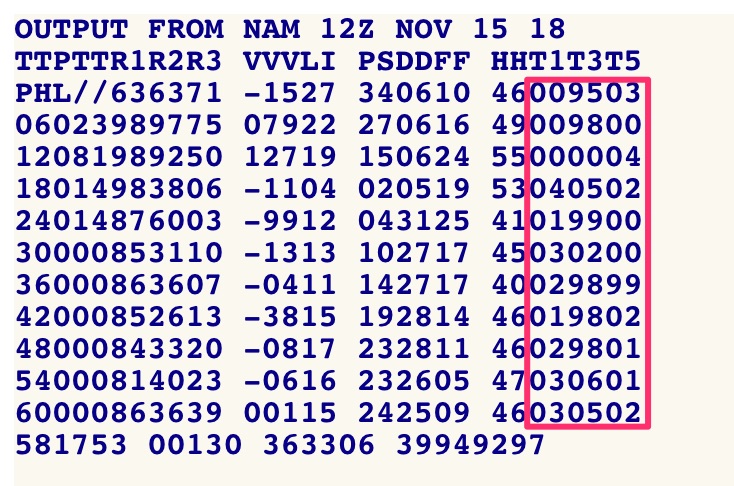The computer modeling of this storm had many aspects go wrong…
- The original track, consistently a near coastal storm for many days, became an inland storm.
- The precipitation start time in Philadelphia, shown by most models to be 3-5 PM, didn’t start until 6-8 PM.
- Thermal profiles, due to dynamic cooling and modeling error, allowed more snow than predicted before the changeover.
- Temperatures that were expected to rise rapidly into the 40s shortly after midnight didn’t reach 40 until 6 AM today.
- High temperature today of 49-50 (GFS) was never reached.
- Winds that were supposed to pick up during the night and this morning, didn’t happen (yet.)
- Winds are so light now that fog has developed in many areas, also unpredicted by the models.
- Temperatures, predicted to rapidly drop to freezing by 1-2 PM, are now predicted to be in the 40s until noon!
With this storm, it’s not that one model did better than another. The GFS, NAM and NBM (the NBM is a composite of many models, including the European, Canadian, GFS, NAM, their statistical analogs, and the HRRR) all got it wrong.
Flash freeze? I don’t think so. “Flash Freeze” warnings became its own TV weather reality show when it was realized that this was going to be just a rain storm. Originally based on model runs from early Thursday and predicated on a originally predicted temperature drop from about 49 to 32 in just a few hours, current short range models now show an unremarkable drop in temperatures during the afternoon today. But the Flash Freeze likelihood has been dispelled by the model runs for two days.
The models are still showing high winds (likely) and a cold snap for later this afternoon and tonight.
[su_note note_color=”#d9f2da”]Current temperatures are running warmer than even this morning’s models. It’s 43 northwest of the city at 11 AM, but the NAM run from this morning predicted 36.
The NBM is looking the best right now- temperature drops to 32 about 3-4 PM and 5 degrees by Monday morning.[/su_note]



